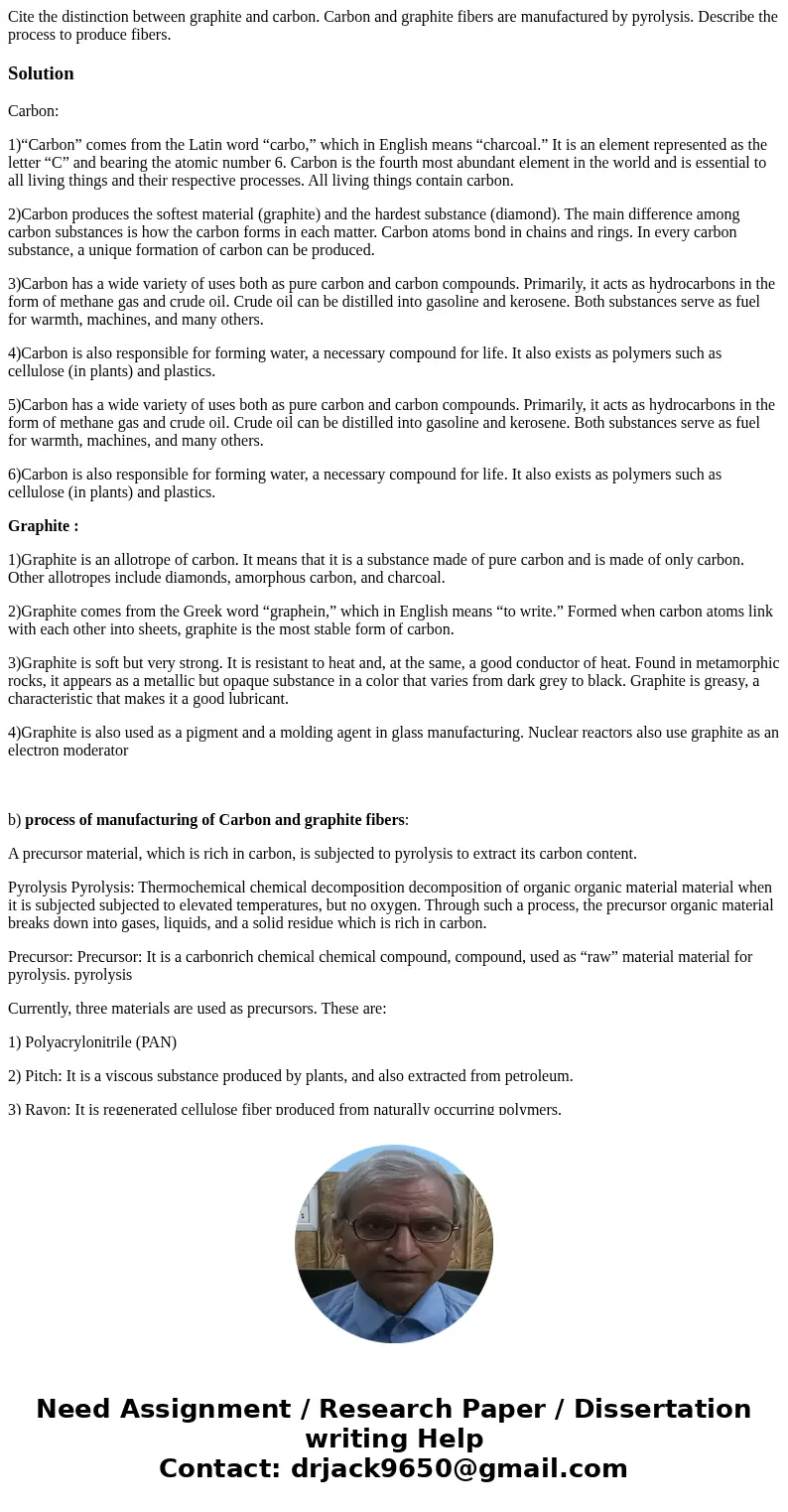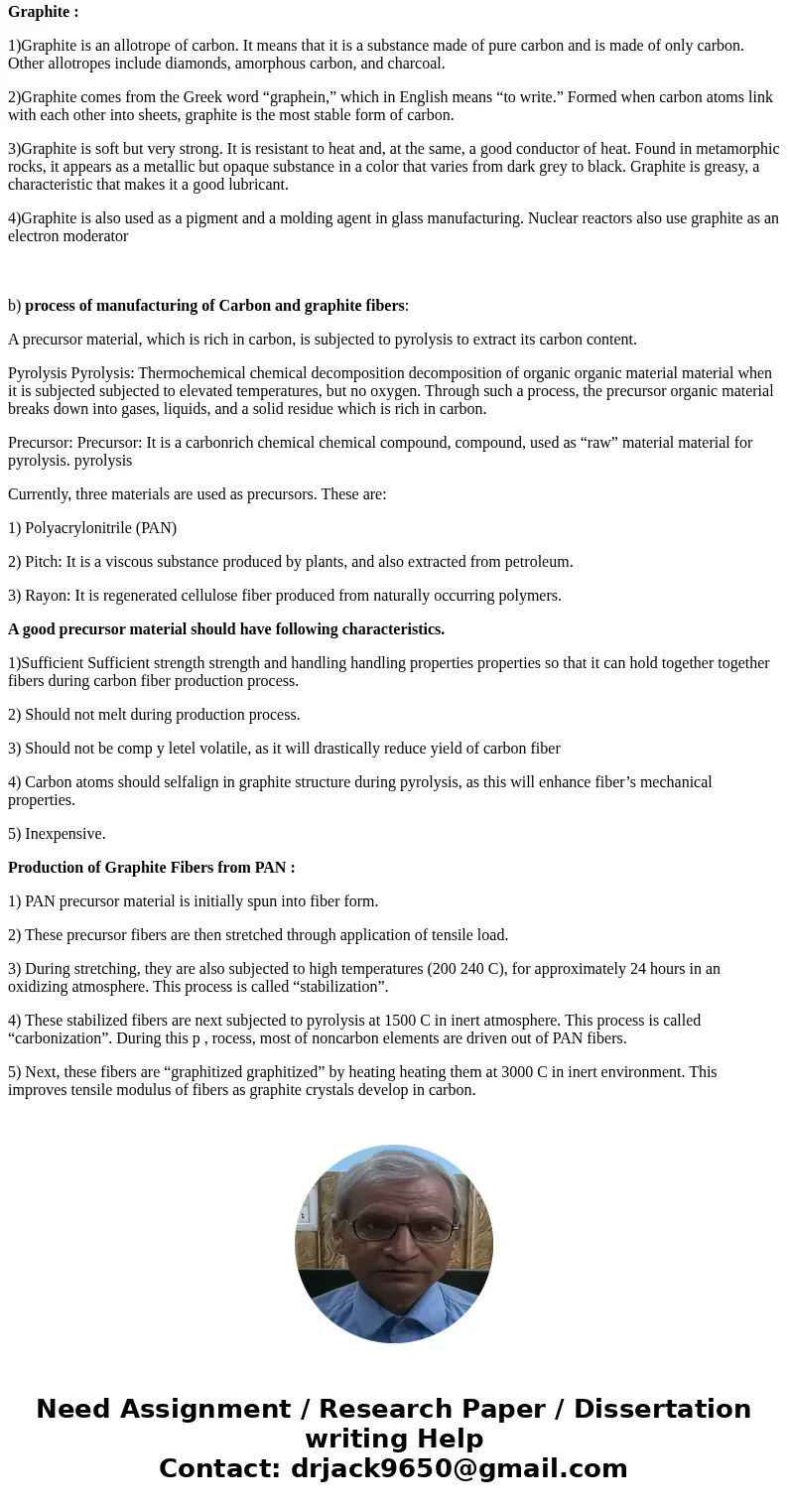Cite the distinction between graphite and carbon Carbon and
Solution
Carbon:
1)“Carbon” comes from the Latin word “carbo,” which in English means “charcoal.” It is an element represented as the letter “C” and bearing the atomic number 6. Carbon is the fourth most abundant element in the world and is essential to all living things and their respective processes. All living things contain carbon.
2)Carbon produces the softest material (graphite) and the hardest substance (diamond). The main difference among carbon substances is how the carbon forms in each matter. Carbon atoms bond in chains and rings. In every carbon substance, a unique formation of carbon can be produced.
3)Carbon has a wide variety of uses both as pure carbon and carbon compounds. Primarily, it acts as hydrocarbons in the form of methane gas and crude oil. Crude oil can be distilled into gasoline and kerosene. Both substances serve as fuel for warmth, machines, and many others.
4)Carbon is also responsible for forming water, a necessary compound for life. It also exists as polymers such as cellulose (in plants) and plastics.
5)Carbon has a wide variety of uses both as pure carbon and carbon compounds. Primarily, it acts as hydrocarbons in the form of methane gas and crude oil. Crude oil can be distilled into gasoline and kerosene. Both substances serve as fuel for warmth, machines, and many others.
6)Carbon is also responsible for forming water, a necessary compound for life. It also exists as polymers such as cellulose (in plants) and plastics.
Graphite :
1)Graphite is an allotrope of carbon. It means that it is a substance made of pure carbon and is made of only carbon. Other allotropes include diamonds, amorphous carbon, and charcoal.
2)Graphite comes from the Greek word “graphein,” which in English means “to write.” Formed when carbon atoms link with each other into sheets, graphite is the most stable form of carbon.
3)Graphite is soft but very strong. It is resistant to heat and, at the same, a good conductor of heat. Found in metamorphic rocks, it appears as a metallic but opaque substance in a color that varies from dark grey to black. Graphite is greasy, a characteristic that makes it a good lubricant.
4)Graphite is also used as a pigment and a molding agent in glass manufacturing. Nuclear reactors also use graphite as an electron moderator
b) process of manufacturing of Carbon and graphite fibers:
A precursor material, which is rich in carbon, is subjected to pyrolysis to extract its carbon content.
Pyrolysis Pyrolysis: Thermochemical chemical decomposition decomposition of organic organic material material when it is subjected subjected to elevated temperatures, but no oxygen. Through such a process, the precursor organic material breaks down into gases, liquids, and a solid residue which is rich in carbon.
Precursor: Precursor: It is a carbonrich chemical chemical compound, compound, used as “raw” material material for pyrolysis. pyrolysis
Currently, three materials are used as precursors. These are:
1) Polyacrylonitrile (PAN)
2) Pitch: It is a viscous substance produced by plants, and also extracted from petroleum.
3) Rayon: It is regenerated cellulose fiber produced from naturally occurring polymers.
A good precursor material should have following characteristics.
1)Sufficient Sufficient strength strength and handling handling properties properties so that it can hold together together fibers during carbon fiber production process.
2) Should not melt during production process.
3) Should not be comp y letel volatile, as it will drastically reduce yield of carbon fiber
4) Carbon atoms should selfalign in graphite structure during pyrolysis, as this will enhance fiber’s mechanical properties.
5) Inexpensive.
Production of Graphite Fibers from PAN :
1) PAN precursor material is initially spun into fiber form.
2) These precursor fibers are then stretched through application of tensile load.
3) During stretching, they are also subjected to high temperatures (200 240 C), for approximately 24 hours in an oxidizing atmosphere. This process is called “stabilization”.
4) These stabilized fibers are next subjected to pyrolysis at 1500 C in inert atmosphere. This process is called “carbonization”. During this p , rocess, most of noncarbon elements are driven out of PAN fibers.
5) Next, these fibers are “graphitized graphitized” by heating heating them at 3000 C in inert environment. This improves tensile modulus of fibers as graphite crystals develop in carbon.


 Homework Sourse
Homework Sourse